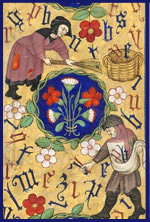Libraries at University of Nebraska-Lincoln

Copyright, Fair Use, Scholarly Communication, etc.
Document Type
Article
Date of this Version
9-2017
Citation
ISBN 978-1-932326-58-1
CLIR Publication No. 174
Published by: Council on Library and Information Resources
1707 L Street NW, Suite 650
Washington, DC 20036
Web site at http://www.clir.org
Abstract
In the winter of 2015, a handful of current and former CLIR postdoctoral fellows gathered at a small restaurant in Washington, D.C., to celebrate publication of The Process of Discovery: The CLIR Postdoctoral Fellowship Program and the Future of the Academy. In typical CLIR fellowship alumni fashion, it took about an hour of relaxation before we began to look at one another and ask, “Now what?” Over fried pickles, barbecue brisket, and vegan spare ribs, we decided to recreate the Collaborative Writing Group (CWG) experience that fostered the collection of essays about what we had learned from our work in academic libraries. The CWG process brings together individuals with unique backgrounds and ideas to explore a single theme. Similarly, the CLIR Postdoctoral Fellowship Program brings together individuals with varied disciplinary backgrounds and points of view relating to research, teaching, and higher education to imagine an increasingly coherent and effective future for the libraries that nurture this work. With current and former fellows sharing the perspectives they have gained from working across the United States and Canada in a multitude of positions, the potential for crafting, improving, and challenging new ways of thinking about libraries and the academy is rich.
This volume explores how library spaces, services, and roles are changing in response to academic librarians’ engagement with teachers and learners. Beginning with “Handing on the Splendid Torch,” which considers three examples of how academic communities are adapting libraries as learning spaces, the volume brings together observations about aspects of libraries and librarianship that affect student learning and are also undergoing rapid change. “Creating Contact Zones in a ‘Post-Truth’ Era” reconsiders the challenge of designing programs that develop student facility in information seeking and critical thinking in a way that is fully integrated with course curricula. “Exploring How and Why Digital Humanities Is Taught in Libraries” looks at several examples of library-based digital humanities research and research support initiatives, noting the affinities and tensions such initiatives have with the broader purposes of academic libraries. “Current Use and Prospective Future of the University Map Library” brings together viewpoints from multiple disciplines about the value of exposing students to maps and geographic information systems (GIS) data through academic libraries. “New Opportunities for Collaboration in the Age of Digital Special Collections” looks at the potential for deeper engagement of students and faculty with special collections and archives through digital libraries. Finally, the authors of “Shiny Things” provide a thorough overview of recent developments in 3D printing in order to examine the potential to integrate library-based “makerspaces” with curricula. Each chapter uses combinations of contemporary narratives and case studies to ground discussions in experience.
Included in
Intellectual Property Law Commons, Scholarly Communication Commons, Scholarly Publishing Commons


Comments
Copyright © 2017 by Council on Library and Information Resources. This work is licensed under a Creative Commons Attribution-NonCommercial-ShareAlike 4.0 International License.